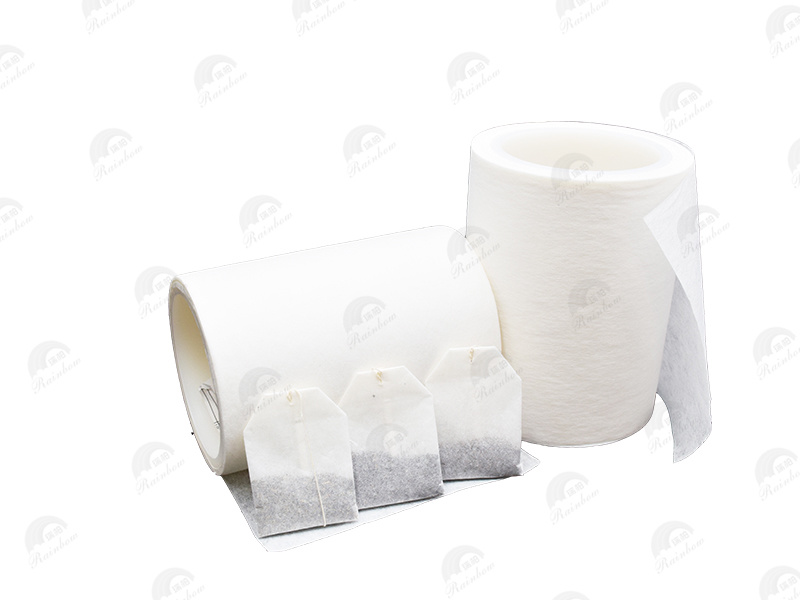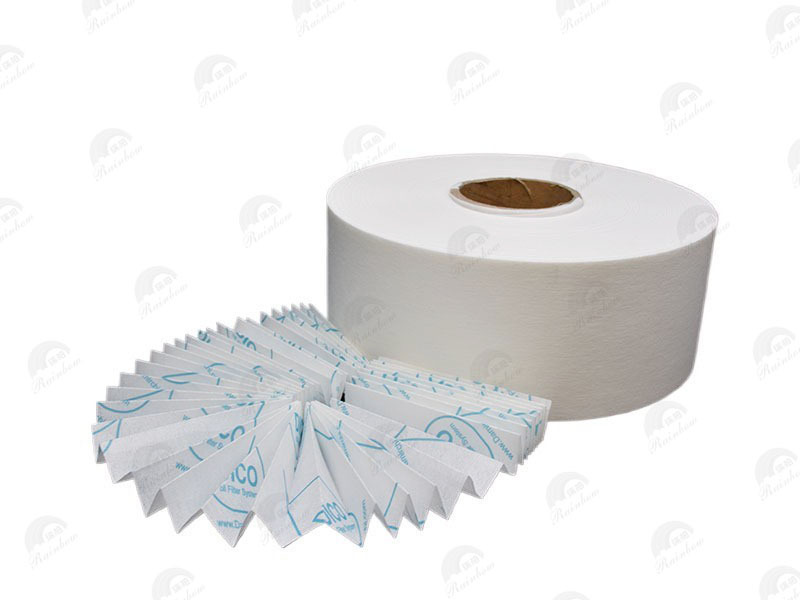Double Sided Fusible Nonwoven Interlining: Elevating Your Crafts with Ease
Release time:
2025-06-29
Double Sided Fusible Nonwoven Interlining: Elevating Your Crafts with Ease
Table of Contents
- Understanding Nonwoven Interlining
- What is Double Sided Fusible Nonwoven Interlining?
- Benefits of Using Double Sided Interlining
- Applications of Double Sided Fusible Nonwoven Interlining
- How to Use Double Sided Fusible Nonwoven Interlining
- Tips for Successful Application
- Choosing the Right Nonwoven Interlining for Your Project
- Frequently Asked Questions
- Conclusion
Understanding Nonwoven Interlining
Nonwoven interlining is an essential component in the textile industry, particularly for those engaged in garment making, home decor projects, and crafts. Unlike traditional woven interfacing, nonwoven interlining is made from fibers that are bonded together through various processes, such as heat, moisture, or pressure, to create a fabric-like material. This unique structure provides several advantages, such as being lightweight, versatile, and easy to work with.
Nonwoven interlining comes in various types, each designed to meet specific needs. It can be made from synthetic fibers, natural fibers, or a blend of both. Notably, double sided fusible nonwoven interlining is one of the most popular choices among crafters and textile professionals.
What is Double Sided Fusible Nonwoven Interlining?
Double sided fusible nonwoven interlining is a specialized fabric that features adhesive on both sides, allowing it to bond seamlessly with fabric layers. This quality makes it ideal for a range of applications, from enhancing the structure of garments to providing stability in crafting projects.
Typically, this type of interlining is made from polyester or a polyester-cotton blend, contributing to its durability and flexibility. Its fusible nature means that it can be easily applied using a household iron, making it user-friendly for crafters of all skill levels.
Benefits of Using Double Sided Interlining
The advantages of double sided fusible nonwoven interlining are numerous, making it a go-to choice for many crafters and professionals alike.
1. Enhanced Structure and Stability
Double sided fusible nonwoven interlining provides excellent support to fabrics, ensuring that garments maintain their shape and structure. It helps prevent sagging or stretching, particularly in areas like collars, cuffs, and waistbands.
2. Simplified Application Process
With fusible interlining, the application process is straightforward. Simply cut the desired shape, position it between fabric layers, and apply heat with an iron. This ease of use allows crafters to work more efficiently, leading to quicker project completion.
3. Versatile Applications
This interlining is suitable for a wide array of fabrics, including cotton, linen, and blends. Its versatility extends to various projects, from sewing apparel to home decor items, giving crafters the freedom to explore new creative avenues.
4. Improved Finish Quality
Using double sided fusible nonwoven interlining can significantly enhance the overall finish of a project. It provides a neat, professional look, reducing the likelihood of fraying edges and ensuring clean seams.
5. Time-Saving Benefits
Crafting can be time-consuming, but integrating double sided fusible interlining into your workflow can streamline the process. The speed at which it bonds to fabric allows crafters to spend more time on creativity and less on tedious tasks.
Applications of Double Sided Fusible Nonwoven Interlining
Double sided fusible nonwoven interlining serves a multitude of purposes across various crafting and sewing projects. Here are some popular applications:
1. Garment Construction
In garment making, this interlining is ideal for reinforcing areas that require added support, such as collars, cuffs, and waistband facings. It helps garments maintain their shape, ensuring they fit well and wear comfortably.
2. Crafting Projects
For crafters, double sided fusible nonwoven interlining is perfect for creating fabric-based crafts, such as bags, quilts, and home decor items. Its strength and versatility make it a reliable choice for tackling diverse projects.
3. Appliqué and Embellishments
When working with appliqué, double sided fusible interlining provides a stable foundation for attaching decorative elements. It ensures precise placement and a professional finish, giving your projects a polished look.
4. Home Décor Items
From cushion covers to curtains, this interlining can be used in various home décor projects. It adds structure, enhances durability, and ensures that your items stand the test of time.
How to Use Double Sided Fusible Nonwoven Interlining
Using double sided fusible nonwoven interlining is a straightforward process. Follow these steps to achieve the best results:
Step 1: Prepare Your Materials
Gather your fabric, double sided fusible nonwoven interlining, scissors, a ruler, an iron, and a pressing cloth. Ensure that your work area is clean and spacious.
Step 2: Cut Your Interlining
Measure the sections of fabric you want to reinforce and cut the interlining accordingly. It's recommended to cut the interlining slightly smaller than your fabric pieces to avoid any excess peeking out.
Step 3: Position the Interlining
Place the double sided fusible interlining between your two fabric layers with the adhesive sides facing the fabric. Make sure to align the edges carefully.
Step 4: Apply Heat
Using a dry iron, press on the fabric and interlining for about 10-15 seconds per section. It's best to use a pressing cloth to protect your fabric and prevent any shiny marks from appearing.
Step 5: Allow to Cool
Once you've applied heat to all areas, let the fabric cool for a few minutes before continuing your project. This will ensure that the bond sets properly.
Tips for Successful Application
1. **Test on Scrap Fabric**: Before applying interlining to your main project, test it on a scrap piece of fabric to gauge how it reacts to heat and pressure.
2. **Use the Right Temperature Setting**: Adjust your iron to the appropriate temperature for your fabric type. For synthetic fabrics, use a lower setting to avoid melting.
3. **Avoid Steam**: When applying double sided fusible interlining, avoid using steam from the iron, as this can interfere with the adhesive bond.
4. **Keep it Clean**: Ensure your iron is clean before using it on fabrics to prevent any residue from transferring onto your projects.
5. **Store Properly**: Keep your remaining double sided fusible nonwoven interlining in a cool, dry place to maintain its adhesive properties.
Choosing the Right Nonwoven Interlining for Your Project
Selecting the appropriate nonwoven interlining is crucial for achieving the desired results in your projects. Consider the following factors when making your choice:
1. Fabric Type
Match the nonwoven interlining to the type of fabric you are using. For lightweight fabrics, opt for a lighter interlining, while heavier fabrics may require a more robust option.
2. Desired Stiffness
Consider the level of stiffness or drape you want in your final product. Some interlinings provide more structure, while others allow for a softer finish.
3. Adhesive Properties
Different brands may offer varying adhesive qualities. Choose one that suits your project—whether you need a permanent bond or a temporary hold.
4. Color Compatibility
While most interlinings are white, some may come in different colors. Ensure that the color of your interlining doesn’t clash with your fabric.
5. Project Requirements
Lastly, consider the specific requirements of your project. If your project will undergo frequent washing, select a nonwoven interlining that is durable and can withstand laundering.
Frequently Asked Questions
1. Can I use double sided fusible nonwoven interlining on all fabric types?
While it works well on many fabrics, it's important to choose the right interlining for your specific fabric type to avoid issues with bonding or damage.
2. How do I remove double sided fusible nonwoven interlining if I made a mistake?
You can typically remove it by gently heating the area with an iron and lifting the interlining off. However, this may not always be successful without damaging the fabric.
3. Is double sided fusible nonwoven interlining washable?
Yes, it is generally washable, but always check the manufacturer's instructions for specific care guidelines.
4. Can I use this interlining for quilting projects?
Absolutely! Double sided fusible nonwoven interlining is great for quilting as it can provide support and stability to quilt layers.
5. How do I know if I’ve applied the interlining correctly?
Once applied, the interlining should feel firmly attached, and you should see no bubbling or lifting. If you notice any irregularities, you may need to reapply with proper heat.
Conclusion
Double sided fusible nonwoven interlining is an invaluable tool for crafters, sewing enthusiasts, and textile professionals alike. Its unique characteristics not only simplify the crafting process but also enhance the quality and finish of your projects. Whether you're constructing garments, working on home décor, or exploring creative crafts, incorporating double sided fusible nonwoven interlining can elevate your work to new heights. By understanding its applications, benefits, and proper usage techniques, you can unleash your creativity with confidence, ensuring that your projects stand out for their quality and craftsmanship.
Double Sided Fusible Nonwoven Interlining
Previous Page
Previous Page
Latest News
Nantong Rainbow Technology Co., Ltd.
Telephone:+86-13587673537
E-mail:chrislc717@163.com
Address: Group 42, Xizansi Village, Xiting Town, Tongzhou District, Nantong City, Jiangsu Province

Copyright©2024 Nantong Rainbow Technology Co., Ltd. | Powered by www.300.cn
Copyright©2024 Nantong Rainbow Technology Co., Ltd.
Powered by www.300.cn




